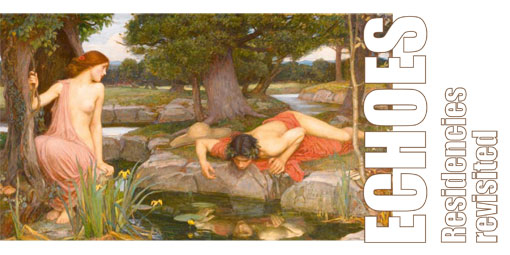
What are the influences and effects of artist residencies on the work of artists? Is it a direct impact that results in a new artistic work produced in a different city? Or does the impact show with a delay, as an echo that only resonates after some time? Is it the networking with people that opens up new practices? Have conversations and suggestions, landscapes, materials and places encouraged experiments? Or deepened an existing strategy?
The wide range of answers to these questions reveals the work processes of guest artists and the impact of residencies and travelling which could in turn give rise to further echoes (as for instance the adaption of the show in Linz in 2016)
The show focuses on the artists who particpated in the exchange between Künstlerhaus Dortmund and Salzamt Linz that has been running for 7 years now.


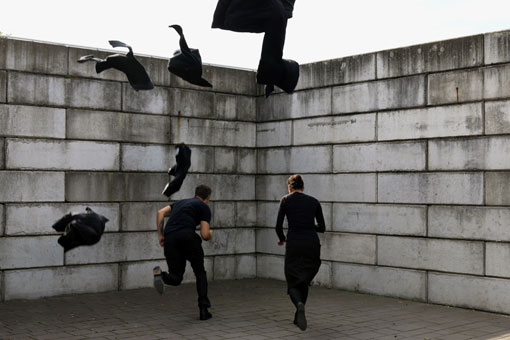
The photographs by Elisa Andessner and Dirk Pleyer represent a selection of works which have been realized in Dortmund in 2014 and 2015, mostly as collaborations. Pleyer and Andesner are inspecting their surroundings, transfering locations into scenes on which they are acting in a physically active way; or they are using originally stationary objects to suggest dynamic moving processes within the static photographic frame.
»An der Ecke« is a sequence of three images of an outwardly bent street corner in the Dortmund harbour, where an inventory unfamiliar to the picture is gathering in the form of an almost typographic formation.
On the other hand »In der Ecke« is showing both actors who are entering an inwardly closed house corner while enacting a movie-like moment through the employment of different directions of movement.
»No Place Like«/H1 and »No Place Ilke«/H5 were shot during a first common photo tour on a pithead stock in Dortmund and represent a photo series in which the human body is both intergrated into the scenery and staged as a foreign object.
»Zimmer« und »Kastl« were created during Andessner's residency at Künstlerhaus Dortmund and are part of her ongoing photographic series »Surrenders to spaces« in which the artist is investigating the objectification of her own body.
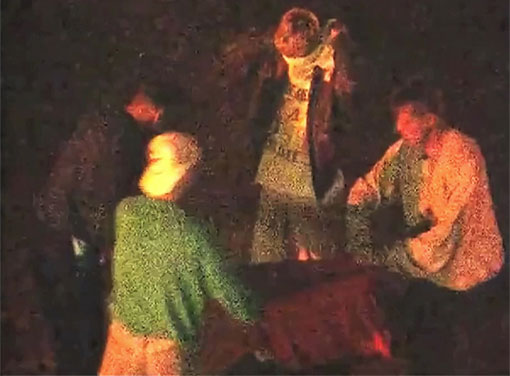
The multimedia wall installation „außer der reihe“ by Patrick Borchers addresses racism and right-wing extremism – which has lately been more present and visible against the background of the current refugee situation – by means of drawing and video. It is based on Bochers' internet collection of photo and video footage of various politically motivated movements, demonstrations and riots. The central piece of the work is a large-scale drawing sheet, on which a nonlinear narrative is realized through the graphical interpretation of numerous photos and photo details, which allows for an individual perception and localization of the depicted contents.
Video sequences adjoining the sheet without a break show frozen, not clearly defined battle-like scenes which suddenly and synchronously turn into moving image sequences. Video and drawing sequences are juxtaposed on a par and as a sum they offer an alternative point of view and level of understanding of an up-to-the-minute socially central and relevant subject.
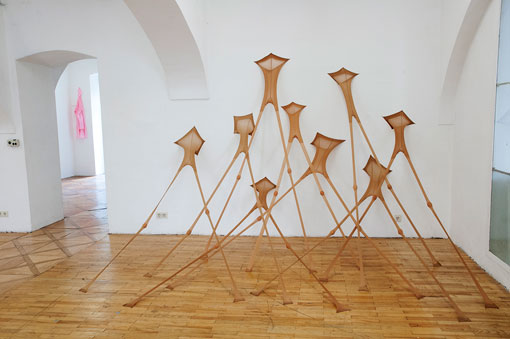
Die Installation „Weiche Knie“ lotet auf spielerisch-fragile Weise die Stofflichkeit und Funktionalität verschiedener Hüllen aus, indem sie zwei alltägliche Materialien in ungewohnten Bezug zueinander setzt.
Während das Ei eine harte Schale besitzt, durch die das Innere nicht gesehen werden kann, ist die Nylonstrumpfhose durchsichtig, weich und flexibel. Unterscheiden sich die Objekte in ihrem Wesen, so erfüllen sie jedoch beide eine ähnliche Funktion. Sie umhüllen beide ihr Inneres und schützen es vor dem Eindringen der Umwelt. Die Strumpfhose wehrt die Blicke der Anderen auf nackte Haut ab. Das Ei bildet die schützende Form für neu entstehendes Leben. In der Installation „Weiche Knie“ wurden diese beiden Objekte jedoch zu einer seltsamen Einheit verbunden, sie bilden einen gemeinsamen Körper. Ein menschlicher Körper, der Standhaftigkeit und Stabilität ausstrahlt. Ein Körper, der Raum ergreift, sich nach oben und unten ausstreckt. In dieser Nachahmung einer menschlichen Anatomie stellt das Objekt Ei das Knie dar und bildet somit die Voraussetzung für die Beweglichkeit und Stütze des Körpers. Jedoch in der Fragilität des rohen Eies zeigt sich hier auch das Wagnis. (Mareike Theile)
www.maritabullmann.de
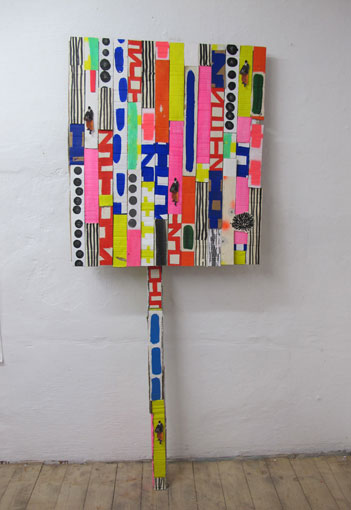
Born in 1979 in Lilienfeld. 2005 - 2012 Studies in painting at Kunstuniversität Linz. His collages, objects and installations are created during a processual work practice, but also spontaneously, following a feeling. Sprawling and colourful works are contrasted by his meditative and clearly accentuated dot works that are telling of duration and time.
"Already as a child my brothers and sisiters and I were playing in the woods or we were helping our parents with the wood work. The connection to nature, to the the trees has lasted, I feel that trees are doing me well, they give me strength and calm me down. Just recently I have found a leaf with black dots."
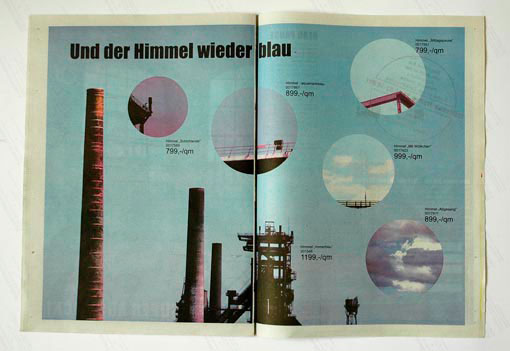
Blaupause (= blueprint) is a multiple in form of an advertising supplement of the local newspaper Ruhrnachrichten. In it, the former iron plant Phoenix-West is disected and the pieces are offered for sale. The offers increase from small parts to bigger ones, and from realistic to unreal. Ultimately the blue sky above the plant is sold by the price per square meter.
This goes back to a national election campaign in the sixties, where the social democratic candidate promised that the sky would be blue again above the Ruhr area, which had not seen a blue sky for a century due to heavy industries. The promise in the sixties meant installing filters, which worked out, the promise of Blaupause is mischievious, meaning that the end of the industries causes a blue sky.
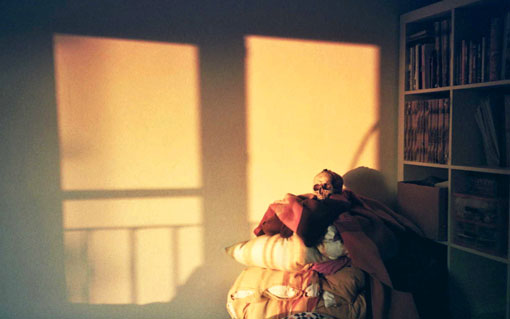
Philippe Gerlach (*1982) has graduated at Kunstuniversität Linz and worked in London as an assistant of Nick Waplington. Gerlach mostly finds his subjects and themes in his personal environment – he is documenting the sense of life of the young generation with his camera. In doing so Gerlach does not stand aside as an observer from the distance though but interacts with people and places and thus autobiographically reflects his own life: "I want to stick to reality as close as possible, much as writing a diary, but photography is always introducing an element of staging." With lucid nonchalance Gerlach is tracing those moments and glimpses when people, places or situations reveal their particularity. Like a broad awake sleepwalker Gerlach is wandering through reality, incidentally and consistently producing pictures which attract the viewer through their originality, intimacy and authenticity. (Joshua Gross - Institut für Moderne Kunst Nürnberg)
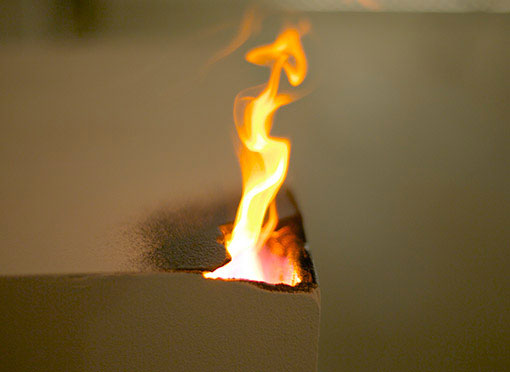
A burning floor is recreated in the form of a spatial installation. We are facing a simulation in which fog – illuminated by orange-yellow light – is emerging through openings in the floor. The flames made from water vapor make the scenario look like the surface is burning at these spots. By means of materials and technical equipment a destructive moment is nothing but suggested.
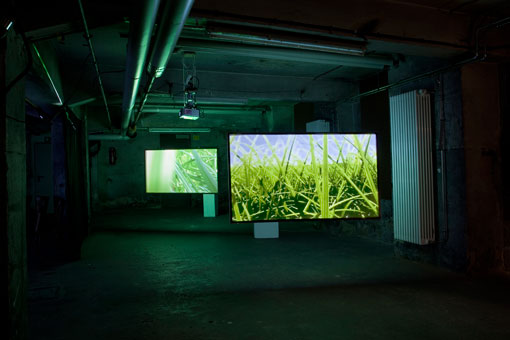
The photo series was induced by the attempt of mystfying nature by detaching it from its environment. This detachment from the context, be it by isolation or by cadrage, the selection of a certain iamge frame, offers a separate, aesthetical view onto the nature of the overly natural. The works investigate the title-inspiring quotation by Dürer using three different media: The photo series of leaf liana floating in the water, the roaming of high grass in a video and - juxtaposed to it - the animation of the same subject. The animation, which is based onto a series of algorithms for the representation of reality is thereby meeting the real, digitized images half-way. The photo and video footage were taken during my stay as an artist-in-residence in Dortmund.
www.kristinakornmueller.com
I try to suck in daily impressions, to internalize and transorm them. I find these impressions in every-day encounters with familiar spaces and objects, in landscapes and in moments of their metmorphosis. All this creates emotional experiences. They lead me to half-forgotten memories which I investigate to find those atmospheres I am capturing within my paintings.
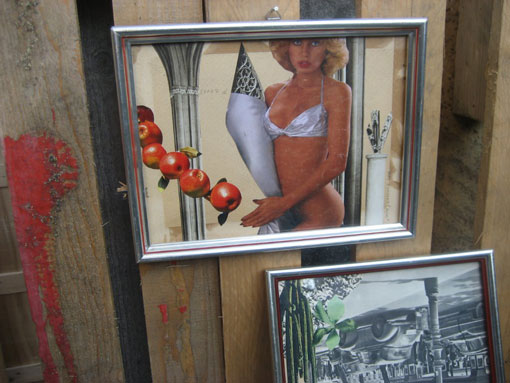
"The process of collecting, detaching, archiving, constructing, de-constructing and re-constructing is following a continuous and adventurous search for found objects which reproduce the longing for and the illusion of 'home' and emerges as an ironizing biographical self-projection on one hand and as a collective portrait on the other hand." (Quotation from the catalogue text by Werner Erich Hable; 2013 )
Under the influence of Vanitas, the still life of European art tradition, the catholic culture of relics and personal involvement / experiences in my life and my environment I am addressing the subjects of life and death for several years now.

In his video 'the engine of reality' Martin Music is following an approach of recording and collecting which iscommited to coincidence and the relinquishment of control. To this end the artist has released a camera attached to a baloon filled with helium. This camera is dispassionately and unbiasdly recording anything that passes its lense: the camera as recorder or Recording Angel (freely adapted from Klaus Theweleit). Powered by the rising wind the camera is swinging to the left and to the right. The journey resembles a dance, somewhere between waltz and polka, calm at first and then ever more larking, like a 'Ring around the Rosie' roundelay. This is increasingly getting out of control. Beware of dizziness! The panoptical and controlling view is wavering considerably.
Seen from this angle 'the engine of reality' by Martin Music is a well-made and critical metaphor for both the random recording of everything and the resulting production of pictoral meaninglessness (in the sense of the impossibilty of a directional insight due to the abundance of images). Light-footed. And the nice thing is: we can return as well. (Jeanette Pacher)
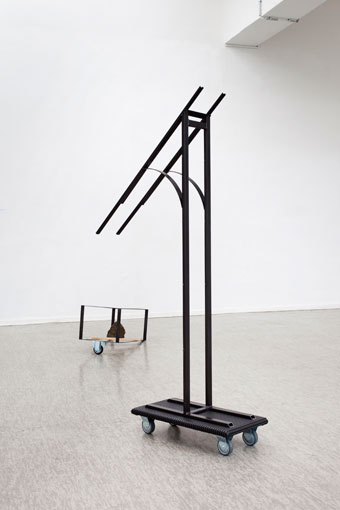
The work "Vehicles" is based on the observation of the surroundings with a camera.
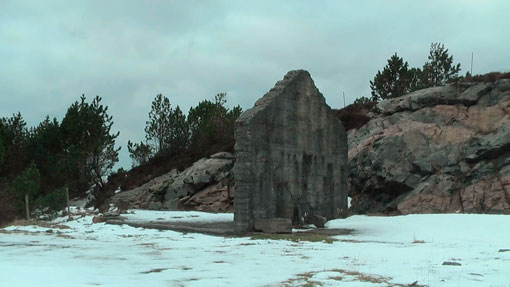
Fedje is a picturesque island north west of Bergen, Norway. Like other islands on the Norwegian west coast it housed a German military base in WW II of which one is reminded by concrete ruins all the way from the main road down to the coast line. About 4 km straight ahead from the place where the series of concrete ruins hits the coast, the reason why Fedje is still affected by consequences of the war today lies aground: U-864
The work was realised during an Artist Residency at USF Verftet, Bergen.
Another work of Rangsch on display in the show is 'Nature's Nature' (2014), a series of photography augmented terms from complex systems theory presented with slide projectors. The work is aprt of the ongoing project 'Nature happens.' initiated during an artist residency in Graz, Austria in 2013 (see www.rangsch.de/natures_nature.html).
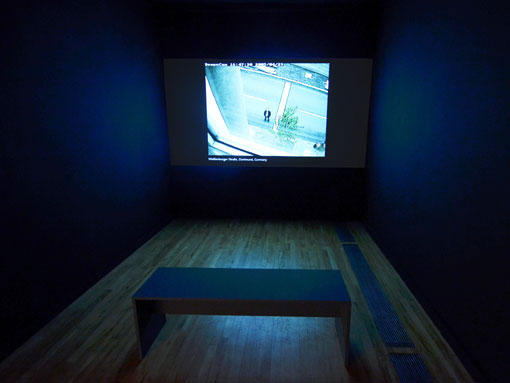
You can watch me.
For more than 14 years I have been tracing the spheres of public webcams: cameras installed in public or private spaces that automatically record images and spread them via internet.
I research where they are located, travel there, and get myself photographed. I was in New York and Moscow, in Las Vegas, London and Novosibirsk. I went to more than 650 webcams in 18 countries. So far.
Once I arrive at a webcam location, I place myself in front of the camera. As »The Traveller«, I stare back into the camera. Same clothes, same pose, every time. A bright shirt and a shoulder bag. You can recognize me in every image. You can watch me.
A lot of questions arise. Who sets up these automated cameras, and why? What do they show? Are people aware of them? Who needs these images? Who looks at them? Does the presence of a camera alter a site? What constitutes a photographic image in terms of authorship or quality?
»The Traveller« project examines borders of private and public grounds, global spread of imagery between irrelevance, information and surveillance, and the aesthetics involved.
Among many other places, The Traveller encountered the legendary coffee machine world’s first webcam was ponted at, the ESA European Space Agency main control room, numerous street corners and backyards, and the inside of a New York police station – arrested for strange behaviour.
Ongoing project since 2001. Co-founded by Bernhard Reuss, Wiesbaden.
www.der-reisende.org
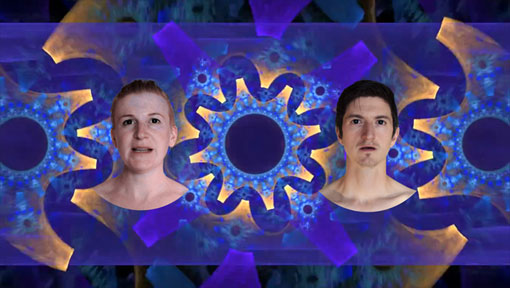
‘Free time’ is an illusion, it must be earned and it must also be spent.
"Contemporary society engages its members primarily as consumers; only secondarily, and partly, does it engage them as producers. To meet the social norm, to be a fully-fledged member of society, one needs to respond promptly and efficiently to the temptations of the consumer market; one needs to contribute to the ‘supply-clearing demand’ and in case of economic trouble be part of the ‘consumer-led recovery’." Zygmunt Bauman, Work, Consumerism and the New Poor, 2005
www.disruptdominantfrequencies.net
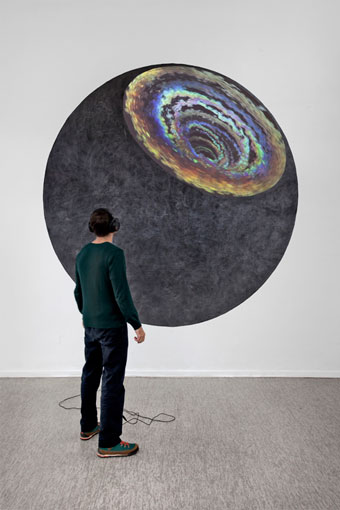
Mankind is busy with his or her own thoughts for half of his or her life insetad of dealing with the external world. The work „White Atlas“ addresses this state of detachment of place and time, of inside world and outside world visually and acustically. The circle becomes a body and covers most of its surface with a grey-black crust. The sphere is cut open simultaneously offering and preventing insights into its innermost. Its shape is oscillating between the exterior view of a planet and a psychological interior view: The sphere turns into a head, a body of resonance. The projection is becoming a loop of thoughts before it can even be gathered. „White Atlas“ makes us dive acustically into these two worlds - as a timeless soundtrack of the mind, produced internally by 'natural' resonances of the larynx, the pharynx and the oral cavity which were acustically projected into exterior space and into the ear of the viewer.
www.adrianewachholz.de

The letters are typed over edges and kinks. They are connecting the paper parts and remind of the thread of a sewing machine that is connecting tissue parts. By bending the paper, three-dimensional, inscribed shapes are created. These shapes are not defined by the reduction of architecural elements as in Winter's installative projectons and object works but by the size of the letter arrays instead. Language and font serve as shape generators. The text is turning into a drawing.
'Schreibmaschinenzeichnung_2015TLV02' is a poem the artist has written during a stay in Tel Aviv. The poem was dictated to a non-German-speaking Israeli. She transferred the German words phonetically into Hebrew writing, neither knowing how the words are written in German nor what they mean. The resulting text is in Hebrew writing but sounds German as soon as someone who is familiar with the pronounciation of the Hebrew letters is reading it out aloud.